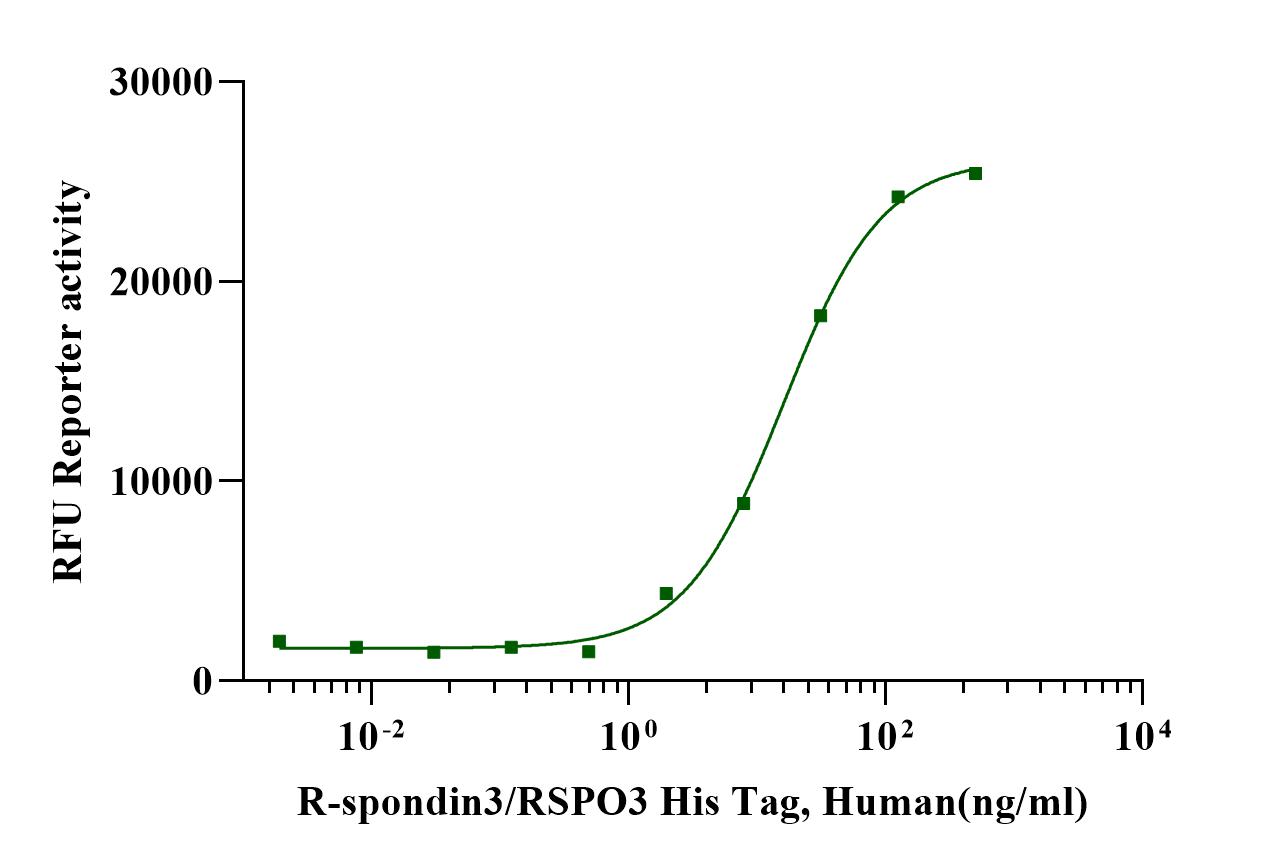 全部商品分类
全部商品分类



Gln22-Val146, with C-terminal 8*His QNASRGRRQRRMHPNVSQGCQGGCATCSDYNGCLSCKPRLFFALERIGMKQIGVCLSSCPSGYYGTRYPDINKCTKCKADCDTCFNKNFCTKCKSGFYLHLGKCLDNCPEGLEANNHTMECVSIVGGGSHHHHHHHH

16 and 20-24kDa (Reducing)

>95% by SDS-PAGE









R-spondin3 (RSPO3), an activator of Wnt/β-catenin signaling, plays a key role in tumorigenesis of various cancers. RSPO3 contains two adjacent cysteine-rich furin-like domains (aa 35-135) with one potential N-glycosylation site (aa 36), followed by a thrombospondin (TSP-1) motif (aa 147-207) and a region rich in basic residues (aa 211-269). RSPO3 is a novel contraction-inducible myokine produced by cultured human myotubes. Human RSPO3 is a paracrine factor that may positively participate in the myogenesis processes of myoblasts and satellite cells. RSPO3 promotes the tumor growth of choriocarcinoma via Akt/PI3K/ERK signaling, which supports RSPO3 as an oncogenic driver promoting the progression of choriocarcinoma. RSPO3 plays a role in the regulation of Wnt (wingless-type MMTV integration site family)/beta-catenin and Wnt/planar cell polarity (PCP) signaling pathways, which are involved in development, cell growth and disease pathogenesis. Genome-wide association studies suggest a correlation of this protein with bone mineral density and risk of fracture.

Reconstitute at 0.1-1 mg/ml according to the size in ultrapure water after rapid centrifugation.

· 12 months from date of receipt, -20 to -70 °C as supplied.
· 6 months, -20 to -70 °C under sterile conditions after reconstitution.
· 1 week, 2 to 8 °C under sterile conditions after reconstitution.
· Please avoid repeated freeze-thaw cycles.
参考图片
2μg (R: reducing conditions, N: non-reducing conditions).
Measured by its ability to induce Topflash reporter activity in HEK293T human embryonic kidney cells.
The EC50 for this effect is less than 20ng/mL in the presence of 5ng/mL Recombinant Human Wnt‑3a.







 用小程序,查商品更便捷
用小程序,查商品更便捷




